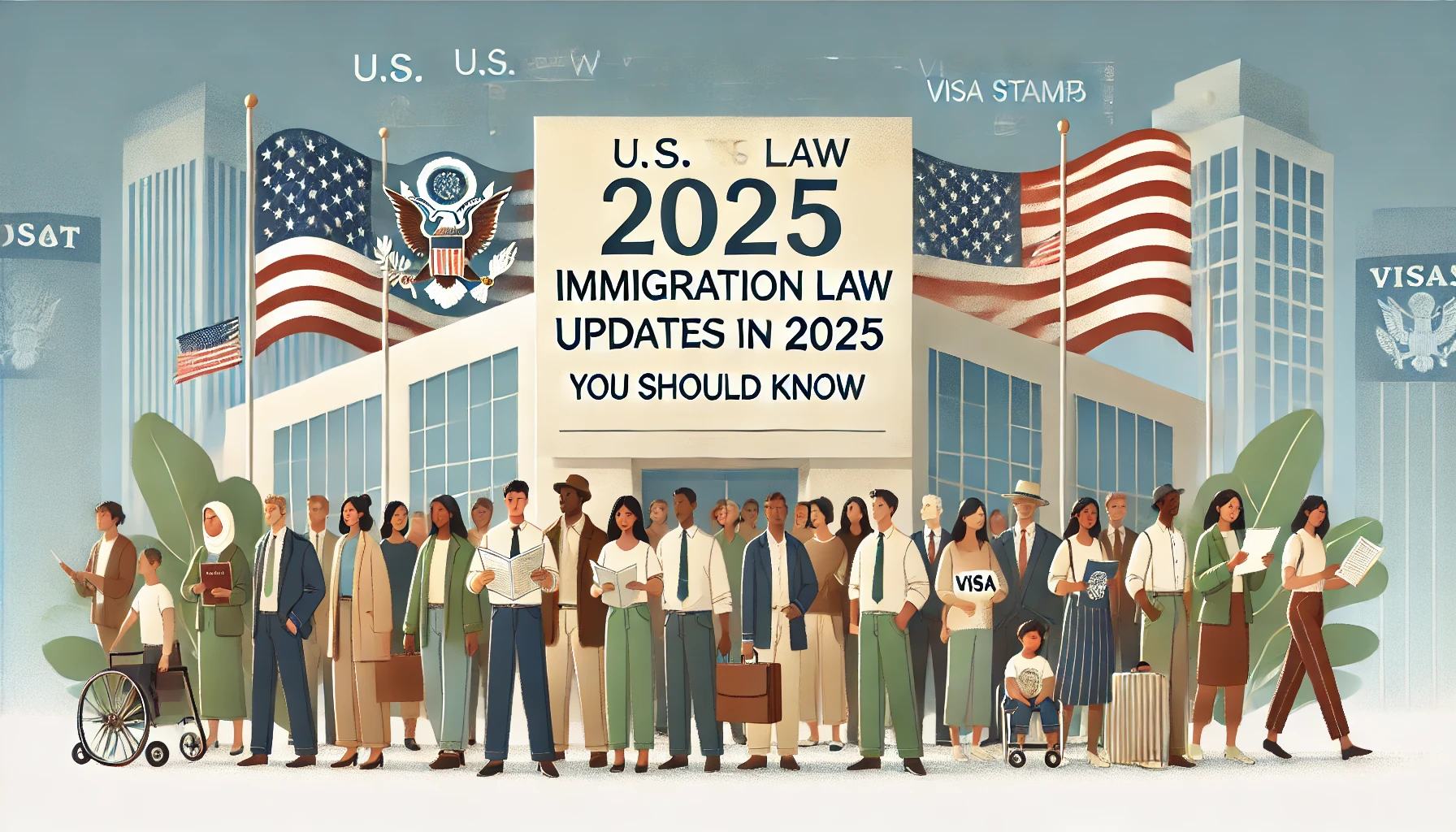Immigration Law Updates in 2025 You Should Know
As immigration continues to shape the cultural and economic landscape of the United States, 2025 brings significant legal changes that every current or aspiring immigrant—and their supporters—should be aware of. Whether you’re applying for a green card, seeking citizenship, or navigating work visas, these updates could have a meaningful impact on your journey.
In this detailed guide, we’ll break down the major immigration law changes in 2025, what they mean for different immigrant categories, and how you can prepare or take advantage of these changes.
1. Faster Green Card Processing for Employment-Based Applicants
One of the biggest shifts in 2025 is the reduction in processing times for employment-based green cards. Thanks to improved digitization and automation within USCIS (U.S. Citizenship and Immigration Services), wait times for EB-2 and EB-3 visa categories have dropped by nearly 30% compared to 2023.
What This Means:
- Skilled workers and professionals may now receive green cards faster.
- Certain backlogs for countries like India and China are gradually clearing up.
Tip:
If you’re on an H-1B visa and eligible to apply for a green card, now is a good time to explore adjustment of status.
2. Expansion of H-1B Cap and New STEM Prioritization
In a bid to attract global talent, the Biden administration has increased the annual H-1B visa cap by 20,000 slots for FY 2025. Moreover, there’s a new prioritization system that gives preference to applicants with advanced degrees in STEM (Science, Technology, Engineering, and Mathematics) fields.
Key Benefits:
- More chances for first-time H-1B applicants.
- Enhanced opportunities for researchers, scientists, and tech professionals.
Video Insight:
3. Pathway to Citizenship for Dreamers (DACA Recipients)
A major legislative win in early 2025 granted a streamlined path to permanent residency and eventual citizenship for DACA (Deferred Action for Childhood Arrivals) recipients. Known as the “American Promise Act,” this law allows eligible Dreamers to adjust their status without leaving the country.
Eligibility Highlights:
- Must have arrived before age 16 and lived continuously in the U.S.
- Background checks and English proficiency are required.
Resource:
4. Family Reunification Enhancements
The State Department has increased efforts to expedite family-based immigration petitions. Priority is being given to spouses and children of green card holders (F2A category), significantly reducing wait times for interviews and approvals.
Why It Matters:
- Families separated by long waits can now reunite more quickly.
- Processing delays due to COVID-era backlogs are being addressed.
5. Reinstated Public Charge Rule with Clarity
The controversial public charge rule, which caused confusion during the Trump era, has returned in a revised and simplified form. As of 2025, applicants must demonstrate financial self-sufficiency, but clearer guidelines have been issued to ensure fairness.
Important Clarification:
- Receiving public benefits like Medicaid or SNAP temporarily does not automatically disqualify you.
- The focus is on the totality of circumstances (education, job, health, etc.)
Learn More:
6. Introduction of Digital Immigration IDs
In an effort to modernize documentation, DHS has launched a new digital ID system for immigrants under review or awaiting interviews. These mobile-friendly IDs include biometric data and status tracking features.
Pros:
- Easier access to case information
- Reduced paper-based errors and delays
7. Temporary Protected Status (TPS) Extensions
Due to ongoing global conflicts and disasters, TPS designations have been extended or granted for several countries including Afghanistan, Ukraine, Venezuela, and Sudan. This allows nationals from these countries to legally stay and work in the U.S. without fear of deportation.
Affected Groups:
- Individuals from conflict zones or humanitarian crisis areas
- TPS renewal applications now have simplified online options
8. Changes to Asylum Policies and Border Processing
2025 has seen tightened asylum regulations at the border, with a focus on rapid screenings and digital document submissions. However, legal aid has also been expanded to ensure fairer hearings.
Key Features:
- Asylum seekers must file within 30 days of entry
- Mobile check-ins and virtual interviews now common
9. Visa Bulletin Predictability
The Department of State now publishes quarterly updates to the Visa Bulletin (instead of monthly), offering more predictable timelines for priority dates. This change helps applicants better plan for interviews, document gathering, and relocation.
Example:
If your priority date is close, you can now plan a move, job change, or family decisions with more confidence.
10. What You Can Do Now
Staying informed is your best asset in 2025. Here’s how to stay ahead:
- Subscribe to USCIS email alerts
- Follow immigration attorneys on YouTube or LinkedIn
- Use legal tech tools like Boundless or CitizenPath
Helpful Links:
Final Thoughts
The U.S. immigration landscape is evolving, with 2025 bringing both opportunities and challenges. Whether you’re here on a student visa, seeking asylum, or helping family members immigrate, understanding the latest policy changes can help you avoid pitfalls and make informed decisions.
Immigration is not just a legal process—it’s a personal journey. With the right knowledge and support, 2025 can be a year of progress and new beginnings for you and your loved ones.

